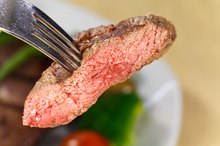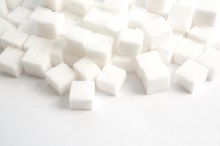What Are the Functions of Lipase Enzymes?
Lipases are a general class of enzymes that break down fat molecules. Fats, also called lipids, exist in many forms; different kinds of fats require different lipases to break them down. Your body uses lipases to digest fat and also depends on lipases to help move cholesterol in the body.
General Lipase Functions
Lipases, like all enzymes, help regulate chemical reactions. Many of the chemical reactions that your cells and systems engage in might happen on their own, but they would occur very slowly. Enzymes like lipases help these reactions take place on faster and more efficient time scales. Further, enzymes help to ensure that reactions take place only when you need them to, which helps your body avoid wasting unnecessary energy on reactions that don't need to take place at a particular time.
Digestion of Nutrients
Enzymes That Break Down Lipids
Learn More
One of the most familiar functions of lipase in the body is digestion of dietary fat. When you eat foods that contain fat, the fats pass through the stomach undigested into the small intestine, explains Dr. Lauralee Sherwood in her book "Human Physiology." In the small intestine, pancreatic lipases—lipase enzymes made in and released by the pancreas—break fats into smaller particles that can pass through the wall of the intestine and into the lymphatic ducts, from which they eventually pass into your bloodstream.
Cholesterol Transport
Another important function of lipases is to help your body package cholesterol for transport in the bloodstream. A specific lipase called LCAT—short for lecithin cholesterol acyltransferase—combines cholesterol with fatty acids, both of which are lipid molecules, or types of fat. The body packages the resulting molecules into transporter particles like LDL and HDL—commonly called bad cholesterol and good cholesterol, respectively—and moves them to or away from the cells.
Other Functions
Food Absorption & Fat Emulsification in the Digestive System
Learn More
Your body uses other kinds of lipases as well. Some of these enzymes break down cellular components, whereas others break down fats that insulate nerve cells. One of the most intriguing of the lipases is phospholipase, which your body uses to break down and recycle cell membrane constituents. Rattlesnakes use a type of phospholipase to "pre-digest" their bite victims, breaking down the cell membranes and producing a skin-encased liquid mixture that they can then swallow and easily absorb.
Related Articles
References
- “Human Physiology”; Lauralee Sherwood, Ph.D.; 2004
- “Biochemistry”; Reginald Garrett, Ph.D. and Charles Grisham, Ph.D.; 2007
- “Biochemistry”; Mary Campbell, Ph.D. and Shawn Farrell, Ph.D.; 2005
Writer Bio
Kirstin Hendrickson is a writer, teacher, coach, athlete and author of the textbook "Chemistry In The World." She's been teaching and writing about health, wellness and nutrition for more than 10 years. She has a Bachelor of Science in zoology, a Bachelor of Science in psychology, a Master of Science in chemistry and a doctoral degree in bioorganic chemistry.









